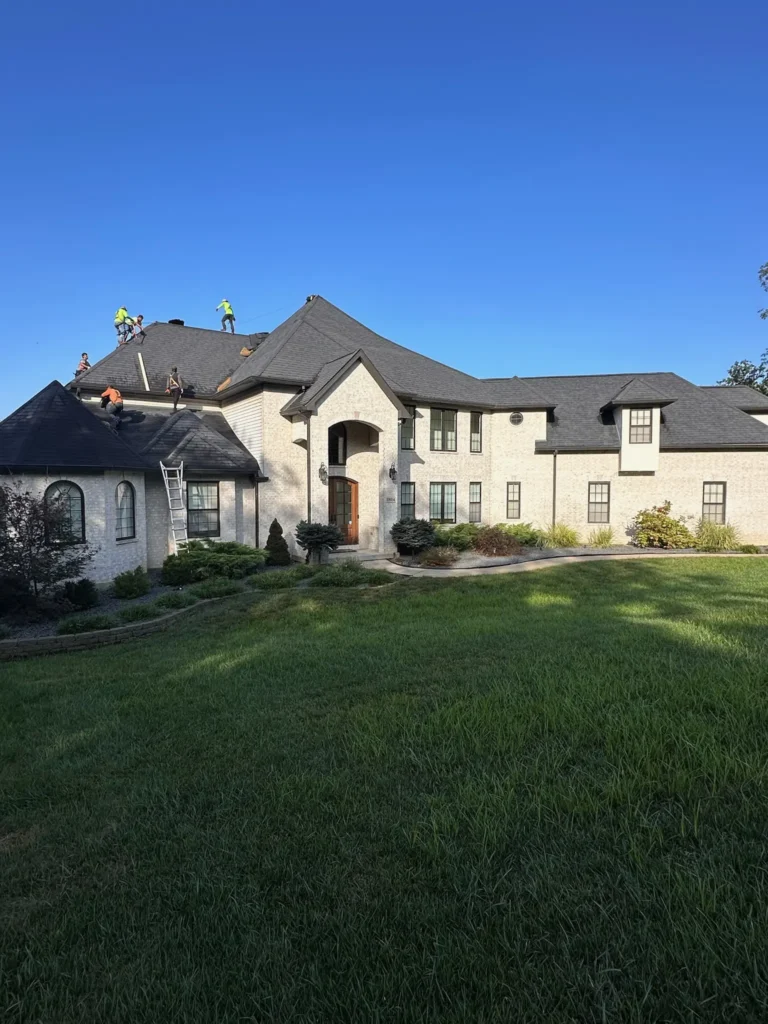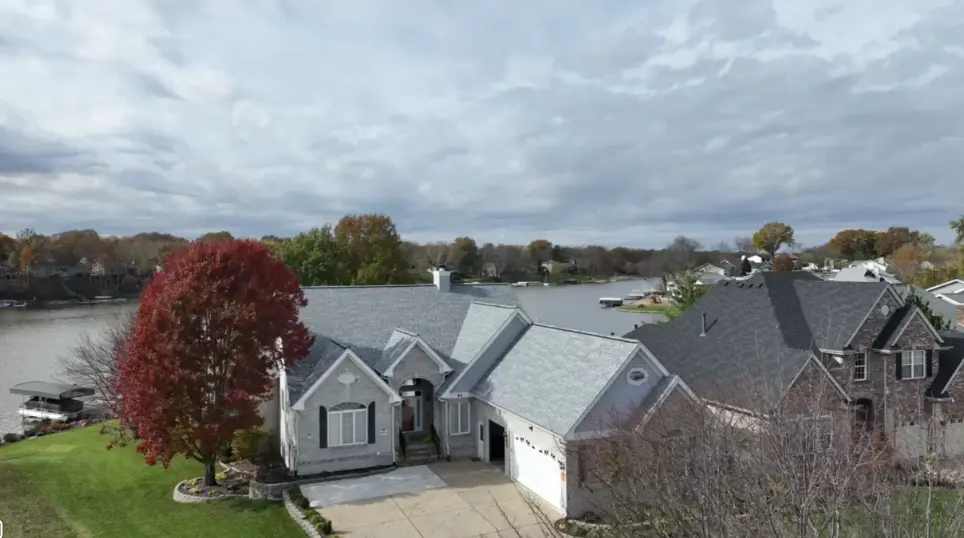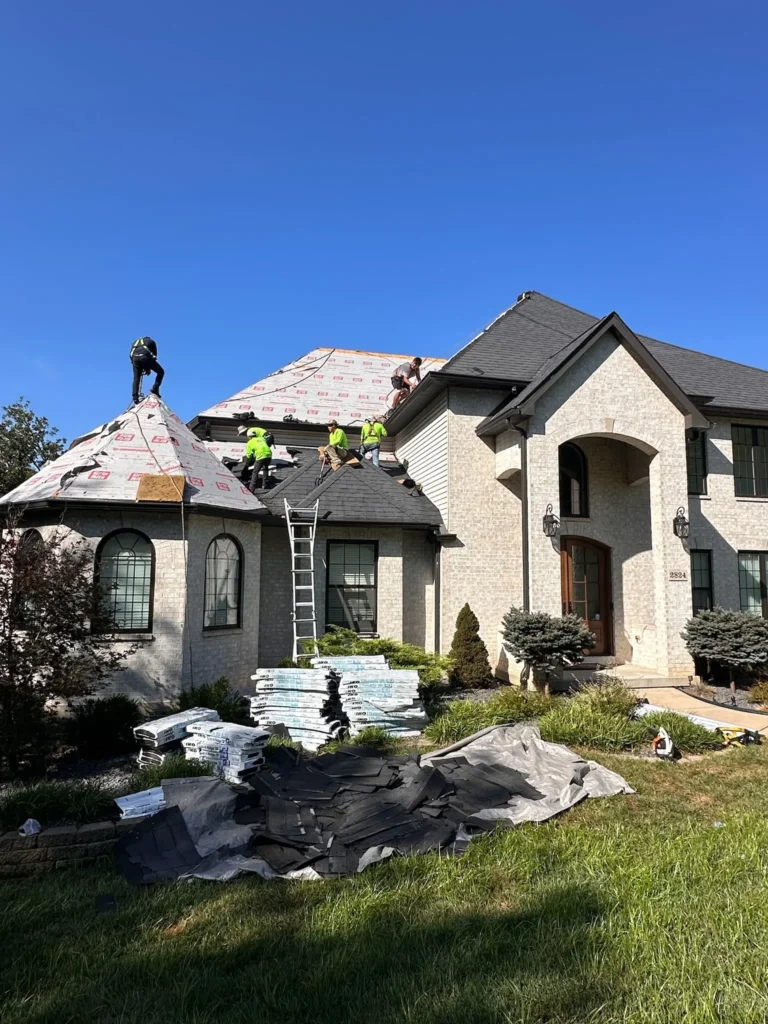So, you’re thinking about your roofing underlayment options? Congrats! That means you’re officially one step ahead of the average homeowner who only thinks about their roof when water starts dripping on their couch. Good for you!
Roofing underlayment may not be the most exciting topic, but it’s the unsung hero of your home’s protection. And trust me, choosing the right type can make all the difference in how well your roof holds up over time. Whether you’re re-roofing your home or just trying to impress your neighbors with your newfound knowledge, let’s break down the three main types of underlayment—synthetic, felt, and self-adhering—and figure out which one is best for you.
But first, if you’re in Lake St. Louis and need a reliable pro for your roof repairs, check out Brody Allen Exteriors for top-quality service. Now, let’s dive in!

What is Roofing Underlayment, Anyway?
Think of underlayment as your roof’s trusty sidekick. It’s that extra layer between your shingles and your roof deck, acting as a moisture barrier and backup protection against leaks. Your shingles do a great job keeping out rain, but when storms get wild or a few shingles go rogue, your underlayment is there to save the day.
Without underlayment, you’d be relying on just shingles to keep your home dry, which is about as risky as using a paper towel for an umbrella. So, it’s kind of a big deal.
The Three Main Types of Underlayment
There are three main types of roofing underlayment: synthetic, felt, and self-adhering. Each has its pros and cons, depending on your home’s needs, your budget, and how much you want to future-proof your roof.
Felt Underlayment: The Old Reliable (But Not Always the Best Choice)
Felt underlayment, also known as “tar paper,” has been around for ages. If your home was built decades ago, chances are it’s rocking a felt underlayment under those shingles.
Pros:
- Affordable, making it a budget-friendly choice
- Easy to install, as most roofers have worked with it for years
- Provides basic water resistance
Cons:
- Not as durable and can tear easily, especially during installation
- Less resistant to moisture since it absorbs water instead of repelling it
- Heavier than synthetic options, adding extra weight to your roof
Felt is like that old truck that still gets the job done but lacks modern bells and whistles. It’s dependable, but if you want the latest and greatest, you might want to consider other options.

Synthetic Underlayment: The Modern Marvel
If felt is the old-school pickup truck, synthetic underlayment is the sleek, high-tech electric vehicle of the roofing world. Made from plastic polymers, synthetic underlayment is lightweight, highly durable, and water-resistant.
Pros:
- Tough and tear-resistant, holding up better during installation
- Water-resistant, repelling water instead of absorbing it
- Lightweight, making it easier for roofers to handle without adding extra weight
- UV-resistant, able to withstand sun exposure longer than felt
Cons:
- More expensive than felt, though the added durability justifies the cost
- Not all synthetic underlayments are created equal, so choosing a high-quality brand is essential
If you’re planning to stay in your home for a long time or want to ensure your roof is well protected, synthetic is often the way to go.
Self-Adhering Underlayment: The Heavy-Duty Option
Self-adhering underlayment is the high-security vault of roofing protection. It’s made with a sticky backing that adheres directly to the roof deck, creating an extra-strong barrier against moisture.
Pros:
- Creates a waterproof seal, especially useful in areas prone to heavy rain or snow
- Great for valleys and eaves where water runoff is highest
- Adds extra protection in hurricane-prone regions
Cons:
- More expensive, making it a premium option
- Requires precise installation, as it is difficult to reposition once adhered
If you live in an area with extreme weather, such as heavy snow or storms, self-adhering underlayment might be your best bet.

Which Underlayment is Best for You?
Still unsure which underlayment to go with? Here’s a quick guide based on your needs.
If you are on a tight budget, stick with felt. If you live in a rainy or humid area, synthetic is your best bet. If your home is in a hurricane or heavy snow region, self-adhering underlayment provides the best protection.
Your choice depends on your home’s specific needs, how long you plan to stay in your house, and your budget.
Need Assistance with Your Claim?
Brody Allen Exteriors can help guide you through the process and ensure your roof is repaired to the highest standards. Many of your neighbors have successfully navigated their insurance claims with our expert assistance.
Why Underlayment Matters More Than You Think
It’s easy to overlook the importance of underlayment since you never actually see it. But this hidden layer plays a huge role in keeping your home dry and protected.
A poorly installed or low-quality underlayment can lead to serious issues, including leaks and water damage, mold and mildew growth, and a shorter lifespan for your roof.
Think of it like wearing good socks with your shoes. Sure, you could go without, but you’d be setting yourself up for blisters—or in this case, roof leaks.
Other Roof-Related Considerations
Speaking of protection, let’s not forget about roof maintenance. If you want your roof to last as long as possible, regular inspections and upkeep are key. That means checking for missing shingles, cleaning out your gutters, and making sure your underlayment is still in good shape.
And if you’re in the Lake St. Louis area, you’ll be happy to know there are plenty of local events to enjoy while your roof is getting some TLC. Check out Lake St. Louis Community Events for fun happenings around town. Because let’s be real—roofing is important, but so is having a good time.
Final Thoughts: Your Roof’s Best Friend
Choosing the right underlayment might not be the most exciting decision you’ll ever make, but it’s an important one. Whether you go with felt, synthetic, or self-adhering, make sure you pick the best option for your home’s climate and your long-term needs.
And remember, when in doubt, consult a roofing professional. If you’re in Lake St. Louis and need expert advice, Brody Allen Exteriors has you covered—literally.
Stay dry, stay safe, and may your roof always be strong.

Stephen Allen
MISSOURI'S BEST
Lake St. Louis Roofing Professionals You Can Trust
When you choose Brody Allen Exteriors, you're choosing a team that's dedicated to protecting Lake St. Louis homes. We live and work in this community, and we're here to ensure your roof is strong, durable, and built to last.



